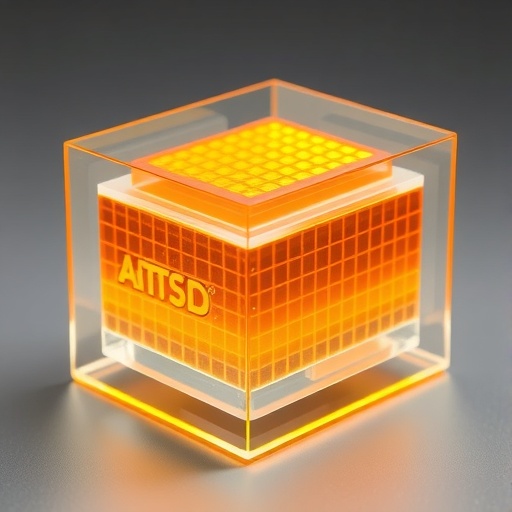Solid oxide fuel cells (SOFCs) are revolutionizing the way we think about energy generation and consumption. These sophisticated devices are at the forefront of clean energy technology, converting chemical energy directly into electrical energy with remarkable efficiency. Researchers across the globe are investing significant efforts to optimize their performance, and a recent study led by Pandya et al. presents an innovative approach to parameter optimization that may not only enhance the efficacy of fuel cells but also accelerate their adoption.
The study focuses on utilizing a quasi-affine transformation evolution (QATE) methodology, which is designed to discover optimal configurations in the operational parameters of SOFCs. Parameter optimization is crucial, as the efficiency of a solid oxide fuel cell is heavily dependent on various factors, including temperature, pressure, and the specific materials used in its construction. By refining these parameters through the application of sophisticated algorithms, researchers can improve the overall performance and longevity of these power systems.
At the heart of the innovation is the evolution matrix and selection operation algorithm, which work in tandem to search through possible configurations systematically. The evolution matrix is not a mere computational tool; it represents a dynamic system in which multiple parameters can be adjusted simultaneously. Through a sequence of iterations, the algorithm identifies the best parameter sets, potentially leading to unprecedented efficiency gains.
One of the critical successes of the QATE approach is its capability to traverse complex solution spaces that traditional optimization techniques often struggle with. For years, engineers have faced challenges when attempting to balance the trade-offs involved in fuel cell performance. The flexibility of the quasi-affine transformation model allows researchers to bypass many of these limitations, thus demonstrating significant improvements in power output and operational stability.
The findings shared in the study illustrate that through careful parameter selection and adaptation of SOFC components, performance metrics can be substantially enhanced. For instance, by optimizing the fuel electrode and the electrolyte material, the team was able to achieve higher current densities, which translates into greater power generation capabilities. This is essential as the demand for higher efficiency in energy conversion grows in light of global climate initiatives aimed at reducing carbon emissions.
What makes this study particularly noteworthy is the potential application of the QATE methodology beyond just solid oxide fuel cells. The techniques developed can be extrapolated to other energy generation systems, such as photovoltaic cells and batteries, demonstrating far-reaching implications for numerous fields within renewable energy technology. As the world shifts towards cleaner energy sources, methodologies that facilitate optimization across various technologies could become game-changers.
The study’s authors highlight the importance of interdisciplinary collaboration in achieving these breakthroughs. The complexities associated with SOFC design and optimization require expertise across materials science, engineering, and computational modeling. The coalescence of different scientific skill sets fosters innovation and yields results that are more linear and impactful than what singular efforts could achieve.
In addition to practical applications, the findings underscore the importance of innovation in the field of energy research. While we possess a solid understanding of fuel cell technology, the continual evolution of strategies and methodologies significantly alters the landscape of potential energy solutions. With each advancement, we inch closer to sustainable energy systems that deliver exceptional performance without compromising environmental responsibilities.
As the study is set for publication in “Ionics” in November 2025, the anticipation surrounding its findings has begun to build momentum within the scientific community. The implications of more efficient energy conversion mechanisms are vast, and the discussions generated from this work will likely spur further research and exploration in the field.
In conclusion, the research by Pandya et al. has introduced a critical step forward in the optimization of solid oxide fuel cells using innovative approaches. The application of quasi-affine transformation evolution presents a novel pathway for maximizing the efficiency of these power systems. As society grapples with the urgent need for clean energy solutions, advancements in fuel cell technology, spurred by research like this, offer glimmers of hope for a sustainable future.
In light of these findings, continued investment in research and development in this domain will be imperative. The transition to sustainable energy does not merely rely on technological advancements, but also on the collective will of scientists, policymakers, and industry stakeholders. Together, they can drive the energy revolution needed to meet the challenges of the 21st century.
By optimizing the parameters that govern the performance of solid oxide fuel cells, researchers are paving the way for new possibilities in clean power generation. These efforts are born from a crucial understanding that every detail counts, and every optimization matters. The implications for both the environment and the economy are significant, promising not just incremental improvements but potentially transformative changes in how we produce and consume energy.
As the publication date approaches, the excitement surrounding this research continues to build in anticipation of the impact it will have. By pushing the boundaries of what is possible with solid oxide fuel cells, the study exemplifies the power of scientific inquiry and innovation in addressing global energy challenges.
Subject of Research: Optimization of parameters in solid oxide fuel cells using advanced algorithms
Article Title: Parameter optimization of solid oxide fuel cell parameters using quasi-affine transformation evolution with evolution matrix and selection operation algorithm
Article References:
Pandya, S.B., Aljaidi, M., Maheshwari, S. et al. Parameter optimization of solid oxide fuel cell parameters using quasi-affine transformation evolution with evolution matrix and selection operation algorithm.
Ionics (2025). https://doi.org/10.1007/s11581-025-06767-3
Image Credits: AI Generated
DOI: 12 November 2025
Keywords: Solid oxide fuel cells, optimization, quasi-affine transformation, energy efficiency, clean energy technology, algorithm development.
Tags: clean energy technology advancementsdynamic systems in energy generationenergy generation and consumption strategiesenhancing longevity of fuel cellsevolution matrix in energy optimizationevolutionary algorithms for energy systemsimproving performance of solid oxide fuel cellsinnovative approaches to fuel cell designparameter optimization for SOFC efficiencyQATE methodology in fuel cellssolid oxide fuel cells optimizationsophisticated algorithms in clean energy solutions





